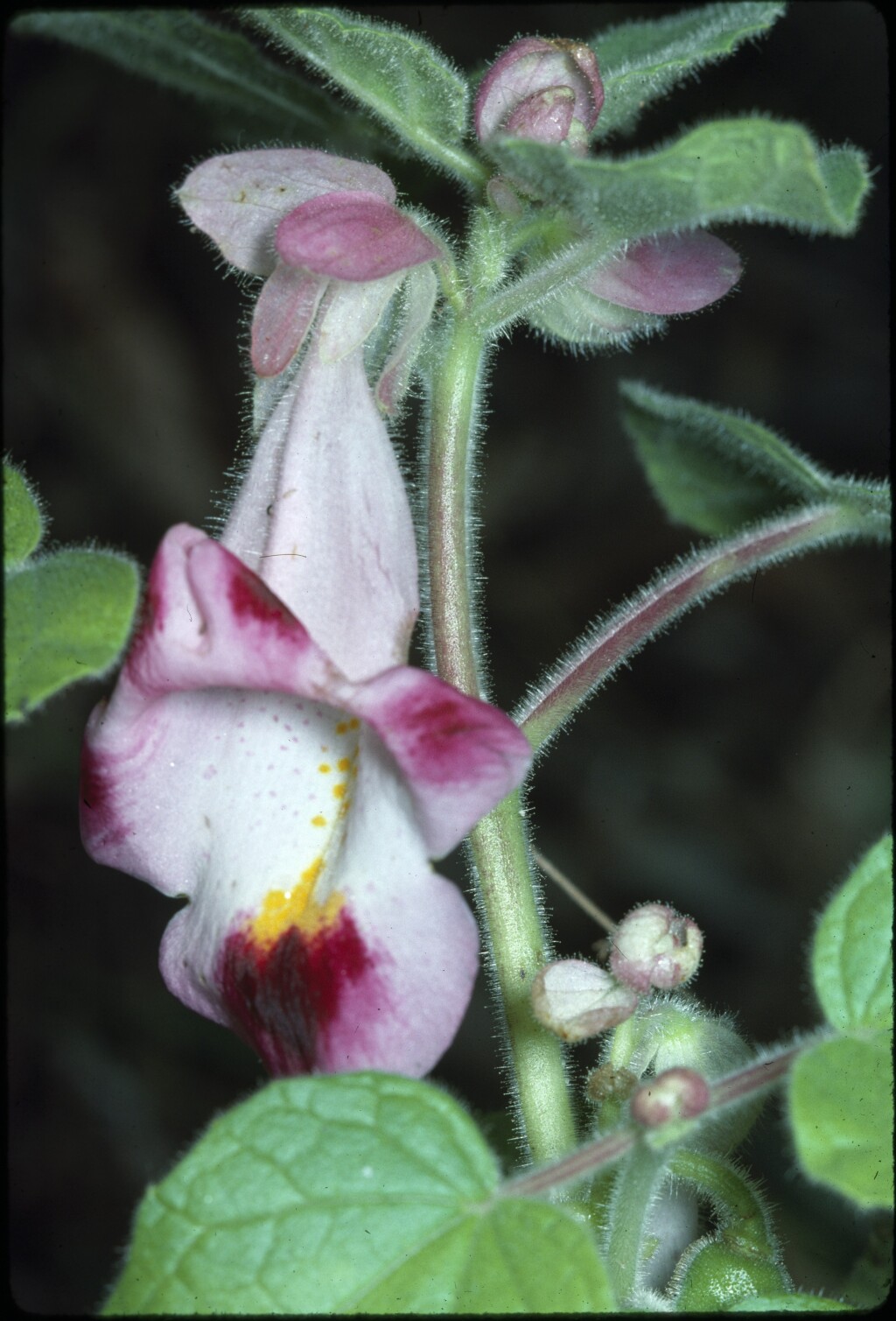Pedaliaceae
Annual or perennial herbs, viscid with short 4-celled glandular hairs. Leaves opposite or alternate, entire, toothed or deeply lobed; stipules absent. Inflorescence a terminal or axillary raceme or flowers solitary; bracteoles 1 or 2. Flowers zygomorphic, bisexual; sepals 5, free to near base or fused into a campanulate tube split on the lower side; corolla tubular, narrow at base, expanded upwards, 5-lobed, often 2-lipped; stamens epipetalous, either 4 fertile in unequal pairs and a fifth rudimentary, or 2 fertile and 3 staminodes; ovary superior with 2 or 4 carpels, sometimes the 2 carpels fused into a single cell or further divided by false septa, ovules few-many, placentation parietal or axile, style 1, terminal, with 2 flap-like stigmas. Fruit a longitudinally dehiscent woody capsule with a fleshy, deciduous, smooth or spinose pericarp, usually with 2 curved horns; seeds oblong, compressed, black.
18 genera and 95 species, from warm-tropical America, Africa and Asia and adjacent temperate areas; 5 genera and 5 or 6 species (3 naturalized) in Australia.
The family is characterized by the distinctive subsessile, 4-celled glands covering the leaves and other herbaceous parts.
Christensen, T.J. (1999). Pedaliaceae. In: Walsh, N.G.; Entwisle, T.J., Flora of Victoria Vol. 4, Cornaceae to Asteraceae, pp. 543–546. Inkata Press, Melbourne.
 Spinning
Spinning

